This post is the second of two highlighting the work of two recent interns to preserve WPA-era Civilian Conservation Corps camps at Laurel Hill State Park. You can read Part 1 and the history of the park in this post.
The Good Ole Days in the Western PA Woodlands
My fondest childhood memories stem from exploring the endless and majestic woodlands of Western Pennsylvania.
I remember hiking the wooded, mountainous trails, listening to the crackling leaves and twigs under my feet, always on alert for an unsuspecting (and unwanted) bear encounter. I can still feel the overwhelming awe and amazement as I stared up through the leafy canopy, watching birds dart back and forth between branches of towering trees. The earthy, moss-veiled trails were full of adventure and opportunity. What I did not realize, or appreciate, at the time was the rich history surrounding the trails, lakes, and cabins I used so often as a child.
As I grew older, my interest in such things piqued. When the opportunity arose for a historic preservation internship at Laurel Hill State Park – the very same park that I camped at as a little girl – I jumped on it. Having just completed my ten-month internship, I am both humbled and glad I did not miss this opportunity!
A Treasure Trove at Laurel Hill State Park
I began working alongside Mary Garcia, our other historic preservation intern who wrote last week’s blog on the history of Laurel Hill State Park.
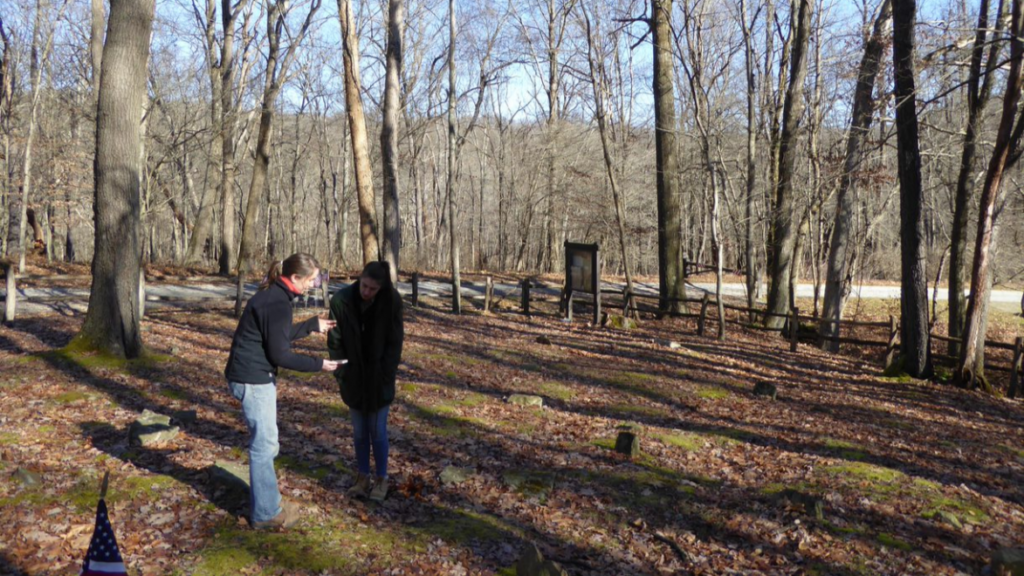
The purpose of our internship was straightforward, or so we thought.
Simply put, our primary goal was to assist in the development and implementation of a cultural resource management plan for the historical resources located throughout the park.
A cultural resource management plan enables park management and staff to preserve and minimize significant change to the historical resources while integrating them into the daily operations of the park. Overall, the management plan is striving for the balance between historic preservation and operational proficiency of the park. I will be the first to admit that the process has been quite a learning curve, but the knowledge we gained in the short time we were there was invaluable to say the least.
What does the development of a resource management plan entail?
Over the summer, Mary and I began by conducting fieldwork to assess the location and condition of all cultural resources throughout the park.
Utilizing an app called Survey123, we trudged through the woods (still on alert for bears), collecting information on all historic and modern buildings, structures, and small-scale features (like water fountains and fire rings) at Laurel Hill State Park. The information we collected included the precise GPS location, material makeup, date of construction, and any notable features of each individual resource in the park.
Once our inventory was complete, we submitted our results to CRGIS – a map-based inventory of the historic and archaeological sites and surveys in Pennsylvania.
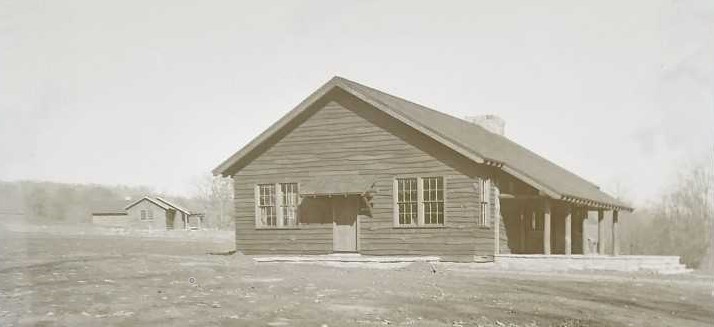
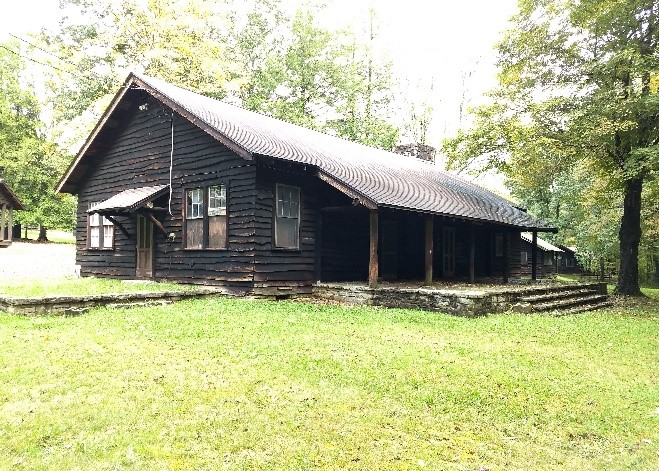
Following our fieldwork, Mary and I hit the books to do some research on the construction of the park. We quickly realized Laurel Hill State Park retains a treasure trove (quite literally) of historical documents, photographs, and resources that enabled us to piece together the history of the park. Our collection contains:
- A 1983 resource inventory
- The 1986 National Register Nomination
- Over 3,000 historical photographs of the park during its construction
- Hundreds of original site plans, master plans, building blueprints, and planting plans
- Hundreds of pages of historical documents written by project managers and Civilian Conservation Corps (CCC) personnel detailing the construction of the park and life in the CCC.
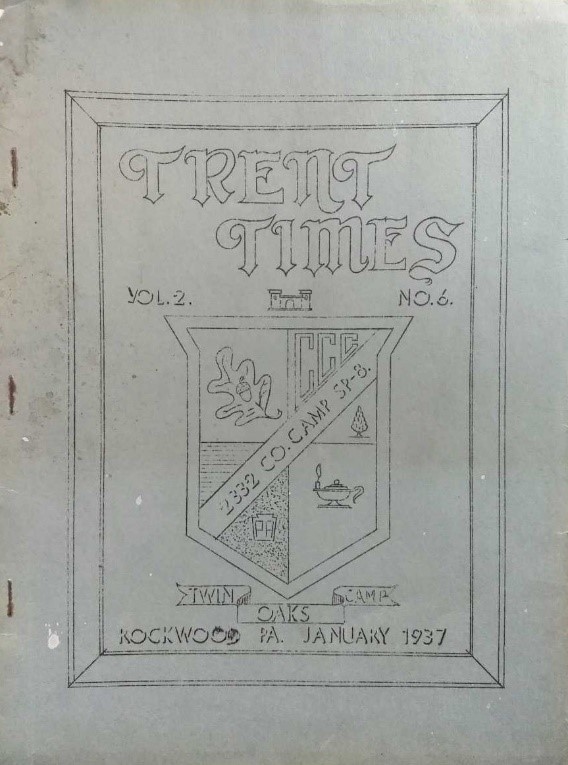
What Makes A Site So Special?
Based on our fieldwork and research, we drafted “one sheets” for each individual complex, or management area, in the park’s historic district.
Do not let the name “one sheet” fool you – the content is very in depth for each complex. The complexes located within the historic district at Laurel Hill include:
- The Park Office
- Maintenance Area
- Two Organized Group Camps
- One Family Camp
- One Picnic Area
- Two Former CCC Camps
- Jones Mill Run Dam
- Stone Entrance to the Park
The documents that we drafted for each complex contain information regarding the description, history, integrity, threats, treatment recommendations, and individual building characteristics.
Characteristics we looked at when determining the overall integrity of a complex included things like building layout and arrangement, the material components of buildings and structures, the overall landscape features, CCC plantings, circulation patterns, and small-scale features (like water fountains and fire rings).
In determining the integrity of a site, we compared the way the site looked in the 1930’s with how it looks today, and determined what changes and alterations have occurred over the last 80 years. This comparison enables us to define which resources retain the highest level of historical integrity and significance in the park.
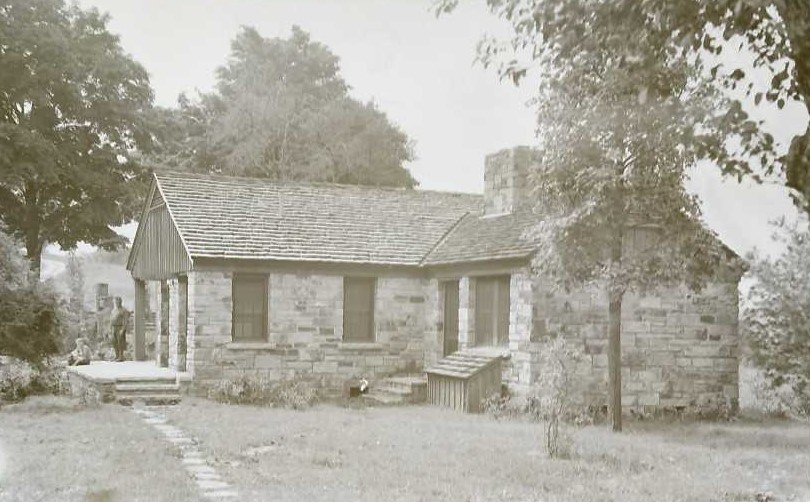
Preservation Priorities
Once we gathered and documented our findings in the one sheets, we were able to assign preservation priorities based on the overall integrity of each complex in the park.
Preservation priorities allow park management and maintenance staff to implement preservation strategies for complexes with greater levels of significance and historic importance while carrying out park operations. Mary and I also compared the cultural resources in the Laurel Hill Recreational Demonstration Area (RDA) with other RDA’s throughout Pennsylvania to get a better idea of the park’s statewide significance. Unique aspects of the cultural resources at Laurel Hill State Park include:
- Laurel Hill is the only RDA to retain an example of each property type built by the CCC in state Pennsylvania parks.
- Laurel Hill has the only known family camp to be constructed in an RDA in Pennsylvania.
- Former CCC Camp 8 is the most intact CCC camp in the state that is still used as an organized group camp.
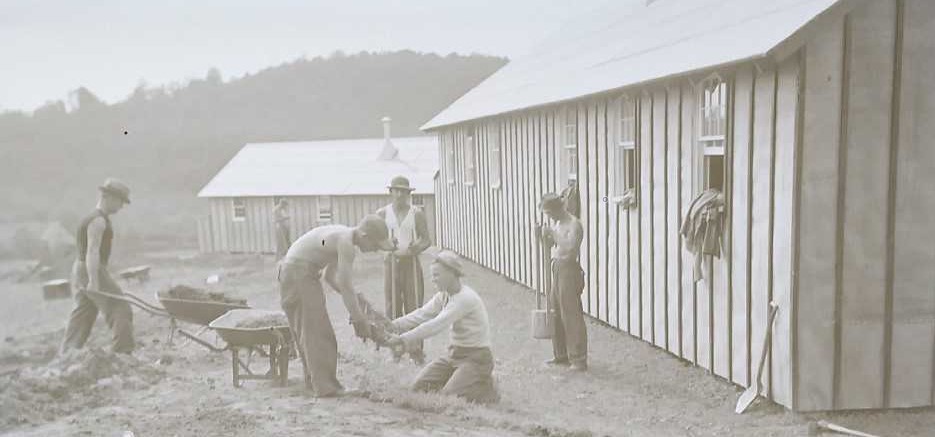
As of right now, we are working on cleaning up and finalizing the one sheets. Once they are complete, we will push forward with creating a template for the cultural resource management plan, which we hope will be an incredibly useful tool for the park to utilize in their preservation efforts of the historical treasures remaining at Laurel Hill. As I mentioned, it has been a challenging, yet rewarding learning experience, and I am grateful for the opportunity to play a hand in the preservation of historical resources at a park that is so very dear to my own heart. After all, I owe many of my fondest childhood memories to the folks who built this park!
Want to Learn More?
If you’d like to learn more about Laurel Hill and cultural resource management plans, be join us at the upcoming Statewide Conference on Heritage, June 19-21 in Chambersburg.
This week’s post was written by Ashley Barry. She is a United States Navy veteran, having served from 2010-2014 as a helicopter mechanic. In 2017, Ashley earned a B.A. in Anthropology with a focus in archaeology and a minor in comparative religions from Western Michigan University. She participated in the 2017 WMU Fort St. Joseph Archaeological Field School, in which she assisted in the continuing investigations of the 18th century architectural remains of the French and British mission, garrison, and trading post.
Ashley recently spent 10 months working as a Student Conservation Association historic preservation intern at Laurel Hill State Park. The internship focused on preparing an addendum to the 1986 National Historic Register and developing a Cultural Resource Management Plan for the remaining CCC-built architecture and landscape architecture in the park.
Comment Policy
PHMC welcomes and encourages topic-related comments on this blog. PHMC reserves the right to remove comments that in PHMC’s discretion do not follow participation guidelines.
Commenters and Comments shall be related to the blog post topic and respectful of others who use this site.
Commenters and Comments shall not: use language that is offensive, inflammatory or provocative (this includes, but is not limited to, using profanity, obscene, or vulgar comments); disparage other commenters or people; condone illegal activity; identify the location of known or suspected archeological sites; post personal information in comments such as addresses, phone numbers, e-mail addresses or other contact details, which may relate to you or other individuals; impersonate or falsely claim to represent a person or an organization; make any commercial endorsement or promotion of any product, service or publication.
If you would like to comment on other topics not related to this blog post but related to PHMC, please fill out the PHMC Contact Us Form.
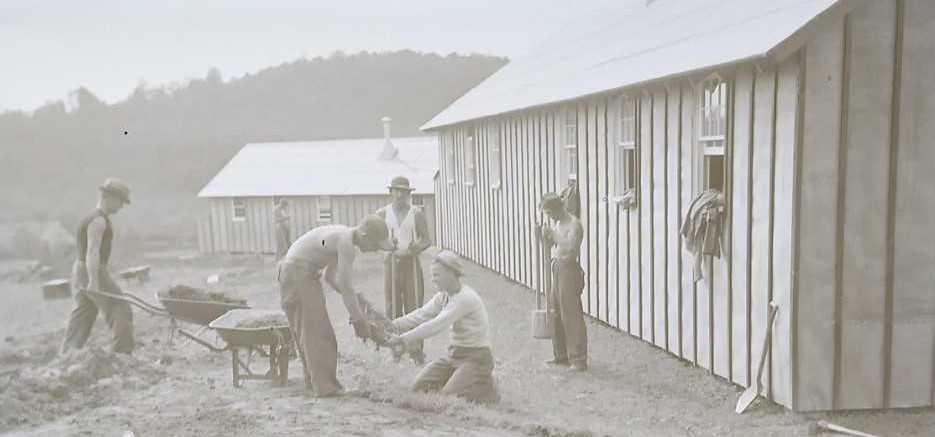
Do you have any info or phots on Group Camp #2? It was known as Camp California when California State Teachers Collage operated it and later as Camp Pleasant 1946 – 1947 when the Boys Scouts used it.